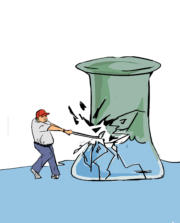
Perhaps the audio of a low and relaxed voice guiding a breathing exercise comes to mind when some think of the mind-body connection. For others, it could be meditation, yoga or Pilates. These practices, and many more, all fall under an umbrella term — mindfulness-based therapies, which foster awareness of physical and mental health.
Mindfulness-based therapies encompass a variety of techniques that focus on both improving someone’s connection with their mental state, such as meditation. Oftentimes, there are also physical components in the case of yoga or tai chi. Yoga is widely known to reduce stress, and this mood-enhancing and stress-reducing effect appears to even affect the body directly from a neurological perspective, with a study from the National Institute of Health revealing that yoga practice leads to better regulation of the nervous system. Similarly, tai chi has been practiced in China since the 17th century, dating back to the Thousand Year Temple in Henan. Nowadays, people connect their mind and body in a variety of different ways, not just by sticking to one practice or exercise, but by making lifestyle choices that allow them to de-stress.
“I connect to the mind and body by relaxing and decluttering,” said junior Madison Spiegel. “A lot of people think that a good way to improve your mental health is to always be up and moving … and trying to be productive. But it is also really important to just listen to your body and get rest when you feel you need it.”
Based on the idea that one’s mental state — thoughts and feelings — can impact physical health, and vice versa, mindfulness-based therapy is all about approaching stress and pain in the present, and acknowledging when to take a step back. It can even be as simple as taking a fraction out of your day to take a few deep breaths.
“I teach my students that it’s really important to take even just three breaths,” said health teacher Barbara Beaumont. “So if you say, today, I’m going to take my brain offline for three minutes, I’m going to set a timer and just inhale and exhale for three minutes. [Eventually] you can slowly increase that time to ten or twenty minutes of your time.”
A lot can be gained from investing just a few minutes out of the day to realize our stressors. Framing a clear mental picture of our stress and health helps keep the mind grounded when anxiety creeps up.
“I remember [I had one week where] I was very unmotivated,” Spiegel said. “Because I have Attention Deficit Disorder, it definitely helped to declutter, because instead of thinking about all of the 10 missing assignments I had I [could] actually focus on what matters.”
Especially with difficult course loads, students find connecting the mind and body to be more important than ever.
“This is a very academic school,” said junior Lorelei Rustay. “People have a really hard workload, people kind of load their courses up with AP [classes], which can be super stressful. And I think if they don’t find ways to manage their mind and body, then it can lead to a lot of stress and other issues.”
This change in perspective is a focal point of connecting to the mind and body — considering one’s feelings in the moment and what’s within one’s control is critical towards coming to terms with difficult emotions and stressors. A study conducted at the Stanford University of Medicine observed that mindfulness-based therapy led to a 30% decrease in stress-related symptoms that are commonly conducive to illnesses. For example, rumination is a known driver of stress and depression.
In addition to more mellow exercises such as yoga or tai chi, aerobic exercise also can help with mental health.
“Going to the [soccer] field with my friends helps a lot because it just takes my mind off what I have to do,” Rustay said. “It gets my body moving and my blood flowing, which is super beneficial.”
Mindfulness-based therapy also helps improve physical health in addition to mental health: improve flexibility, release body tension or counteract the effects of chronic illness.
“I do workouts … I practice meditation [and] physical therapy,” Beaumont said. “I started therapy to help with my early onset arthritis … it’s affected my hips, my back [and] my shoulders.”
From tai chi to yoga to soccer, many teachers and students at Aragon find mindfulness-based therapy, or some other form of physical exercise, to be helpful in connecting the mind and body, and find more happiness as a result.




